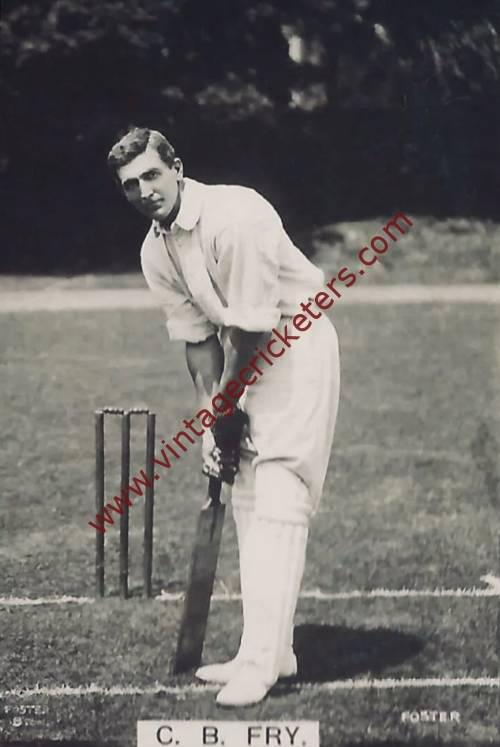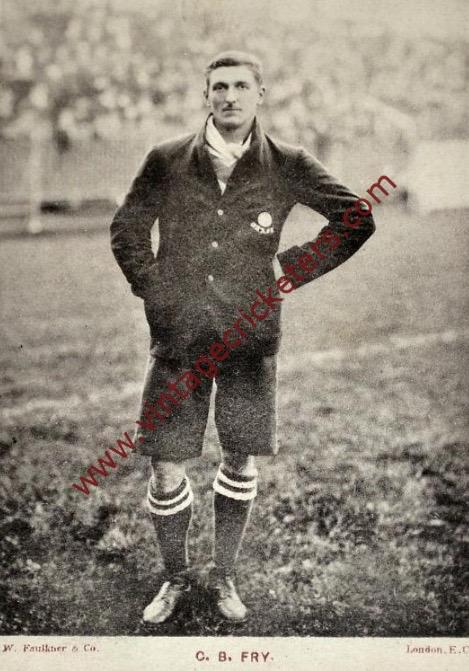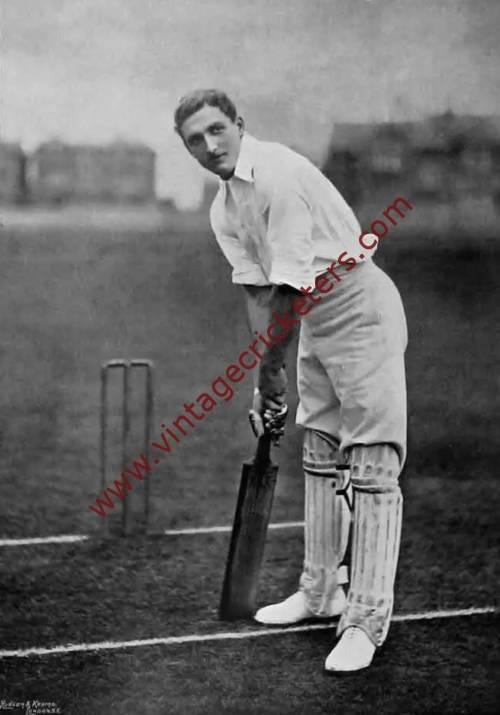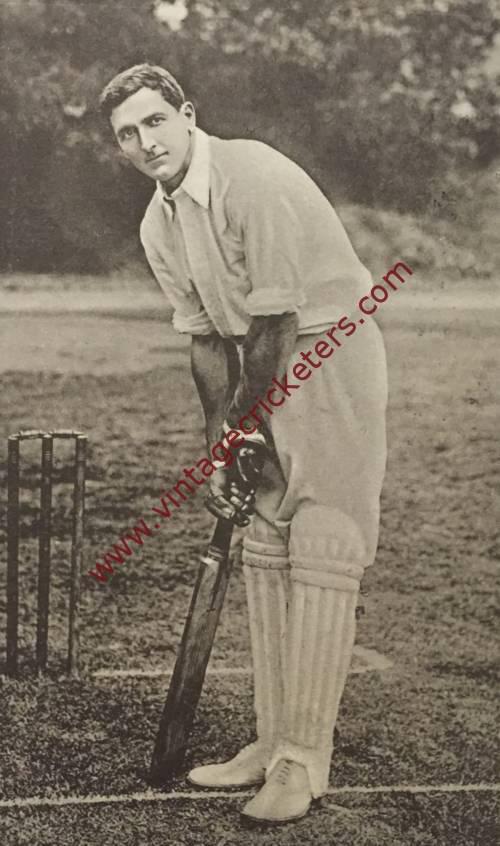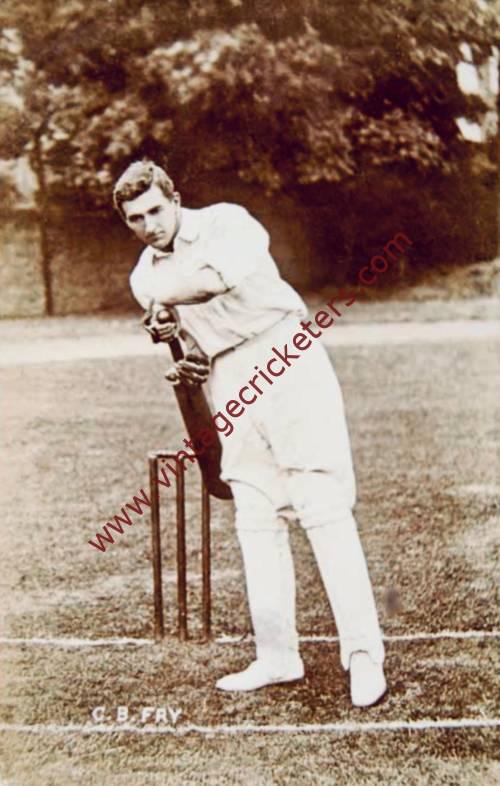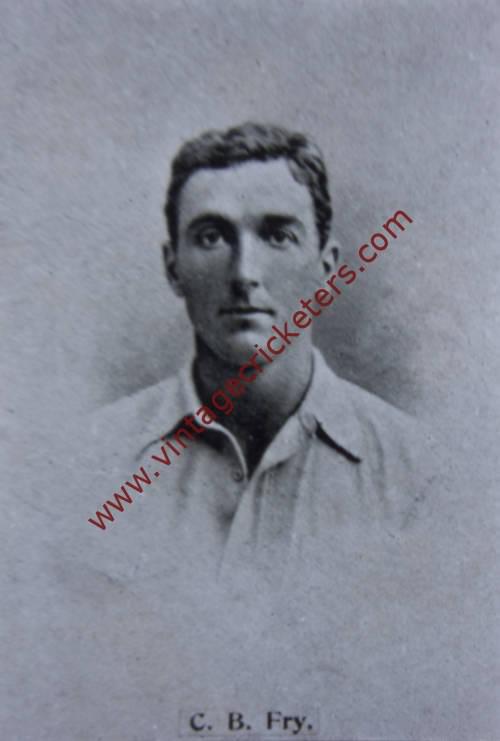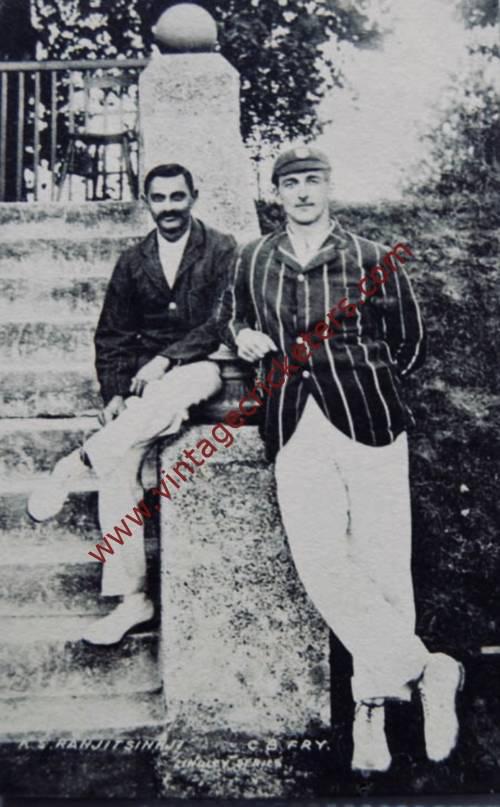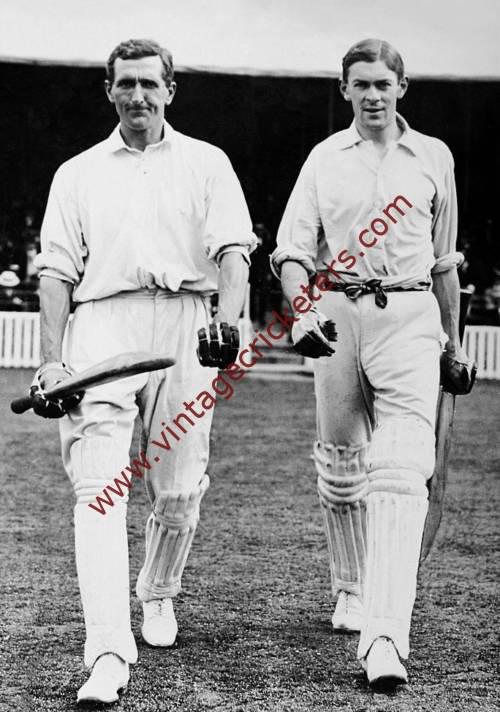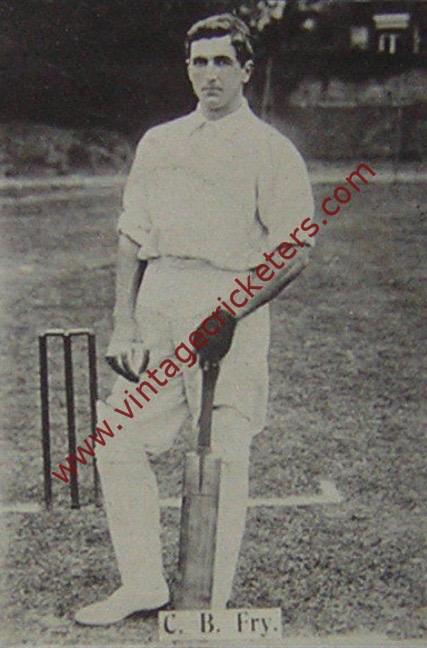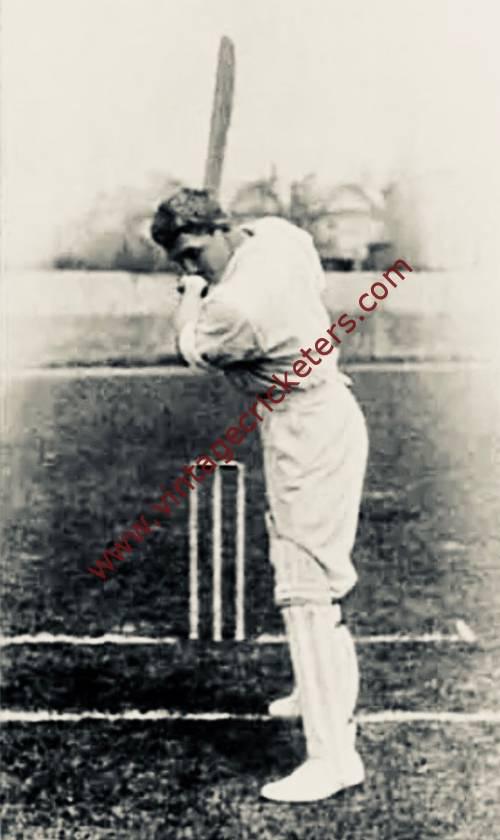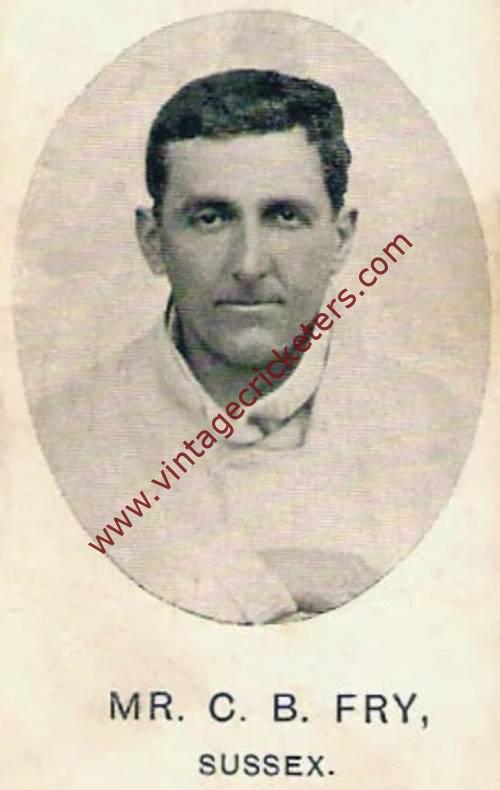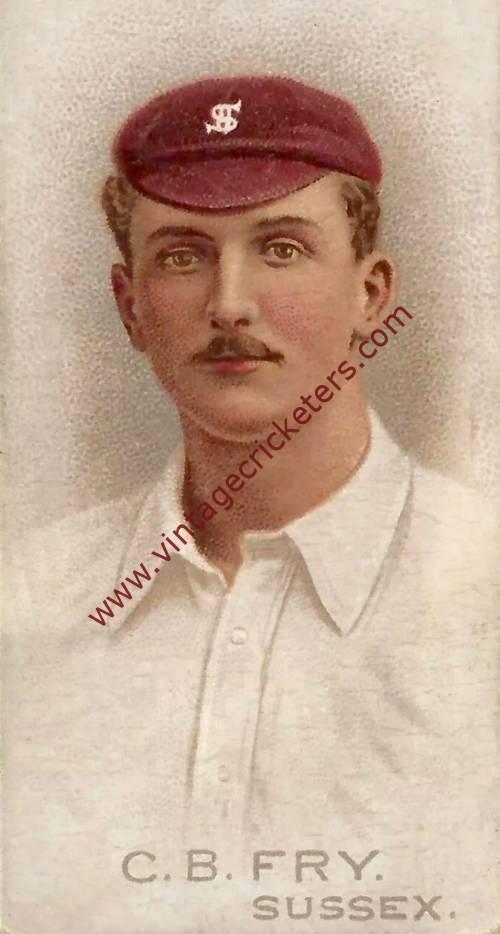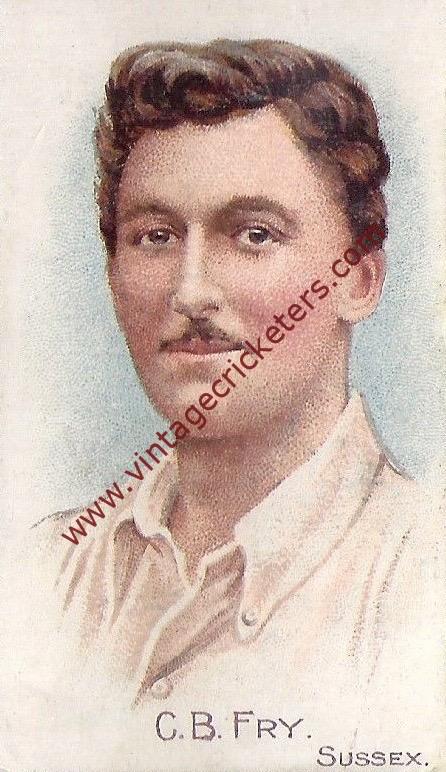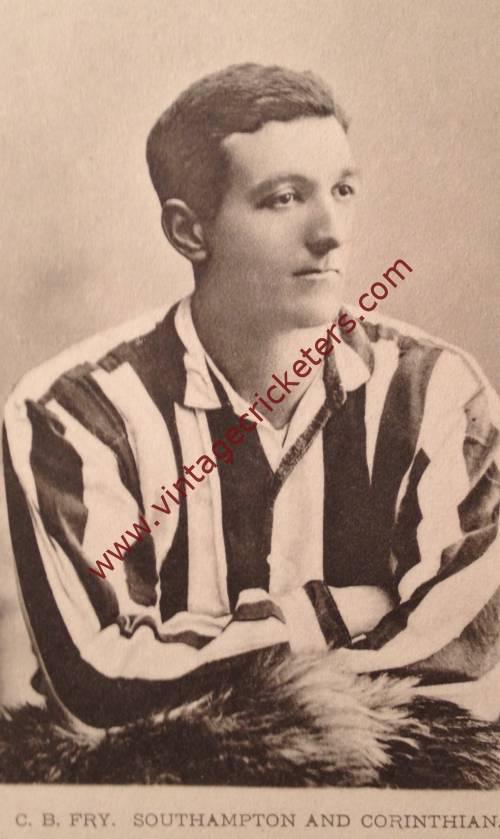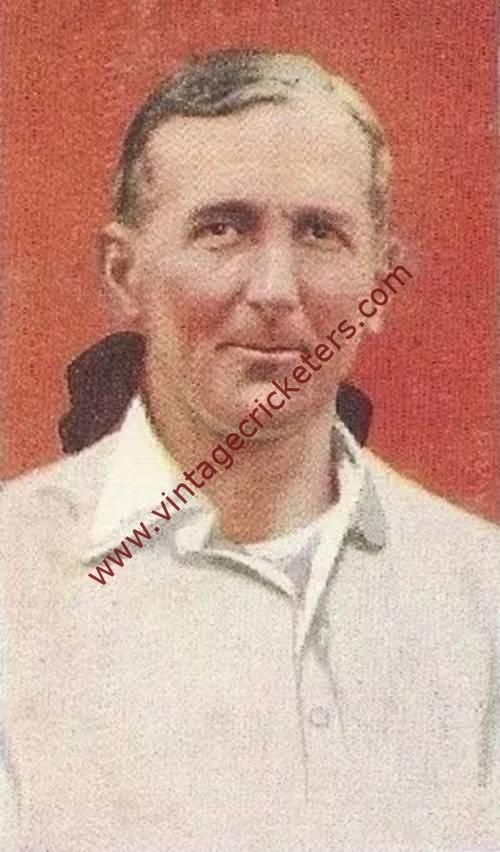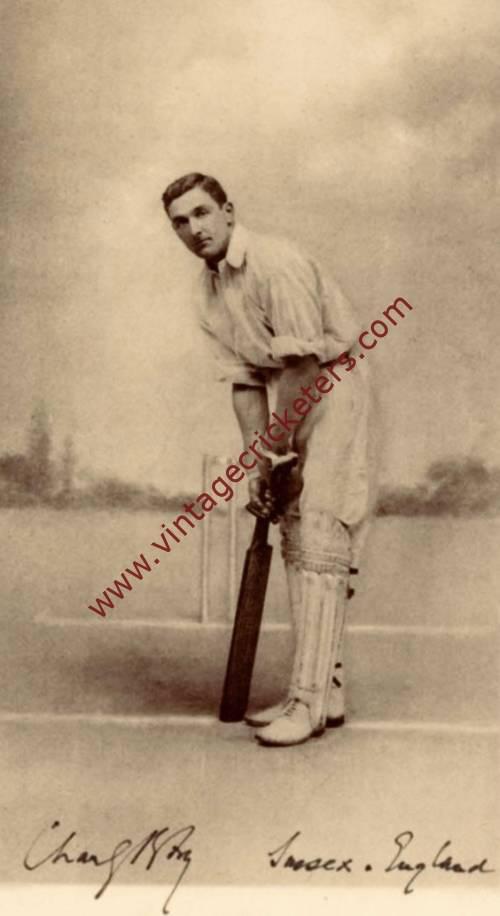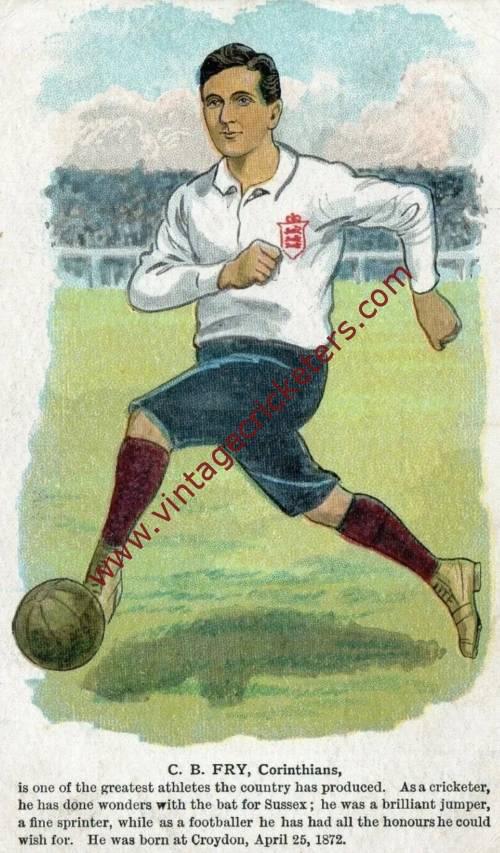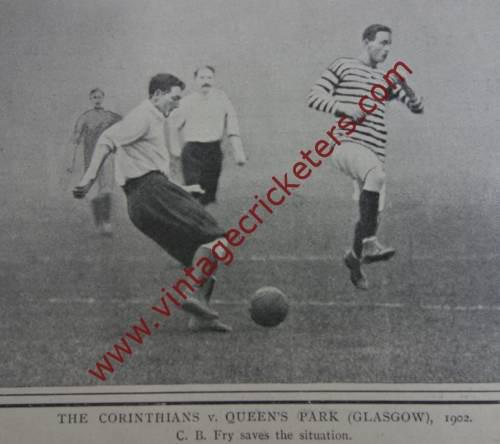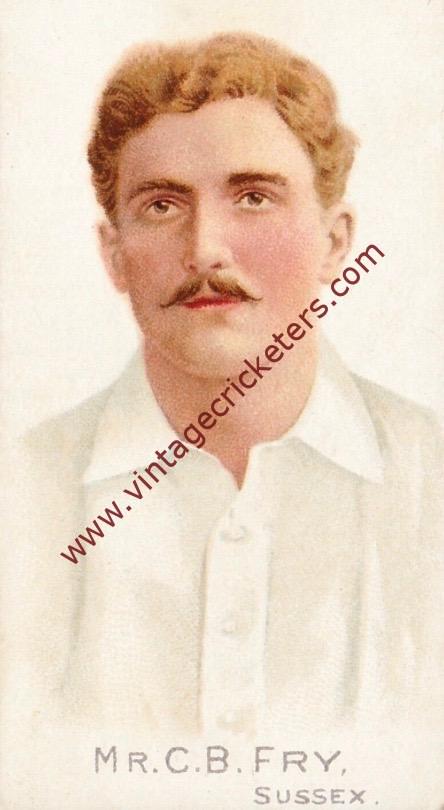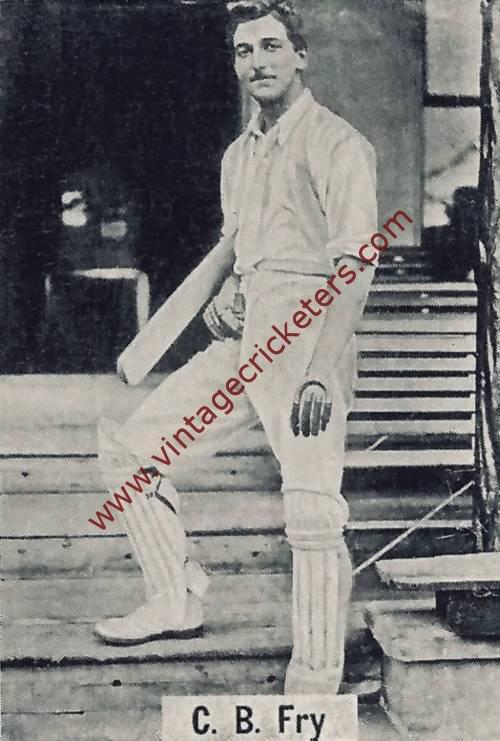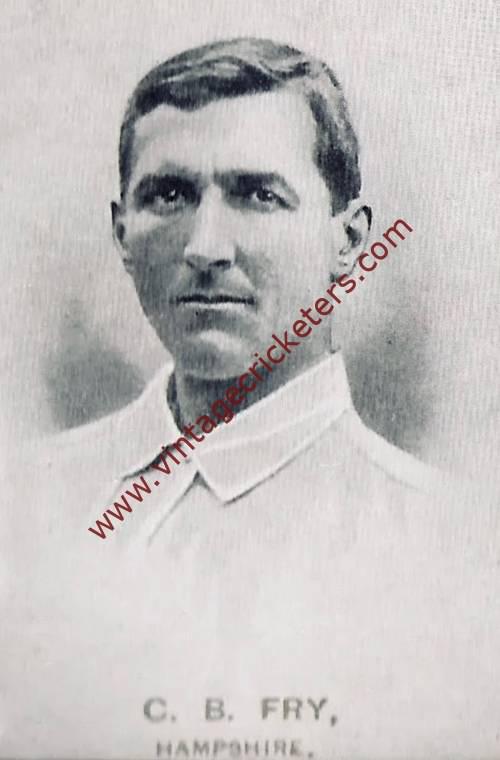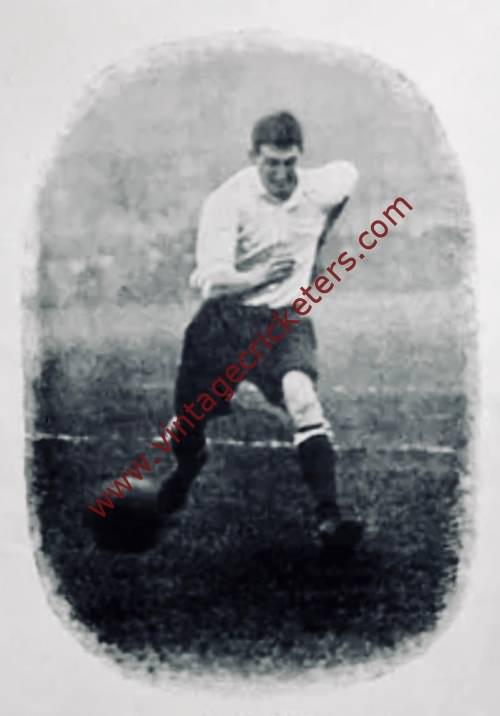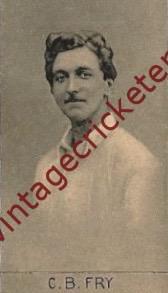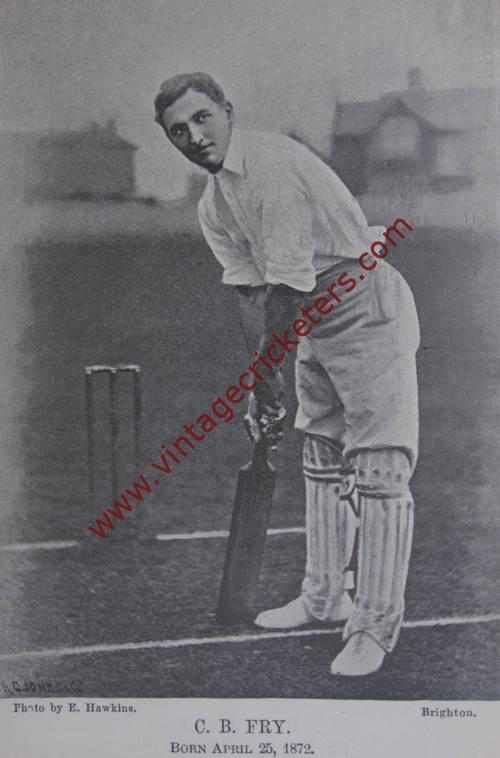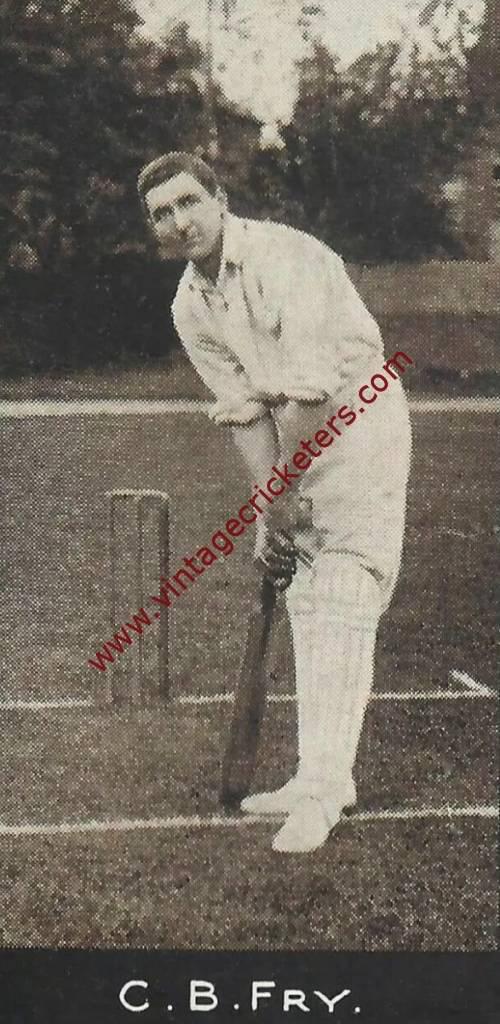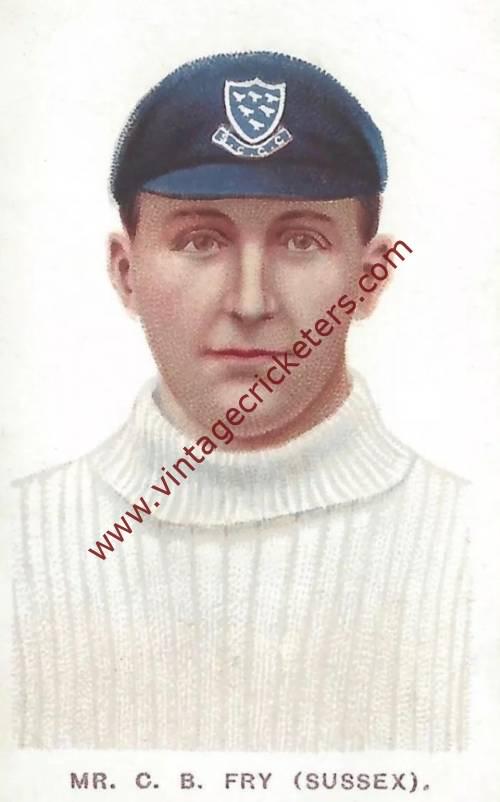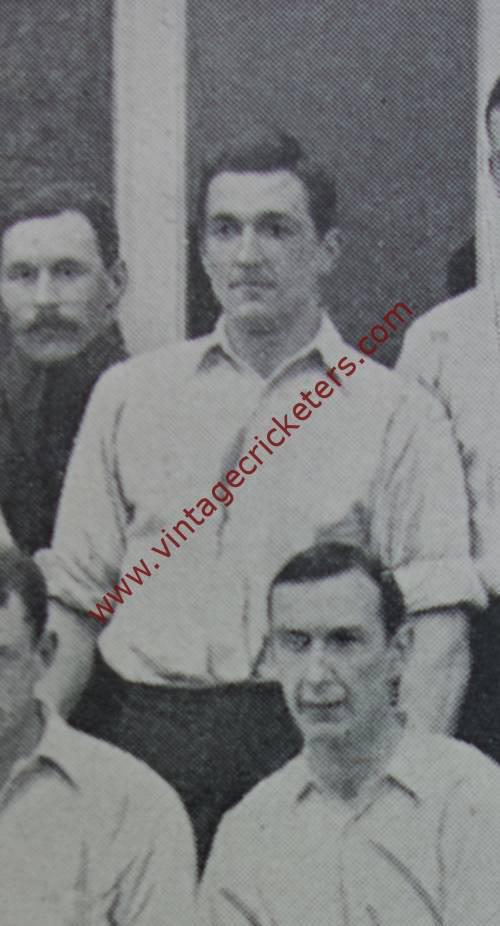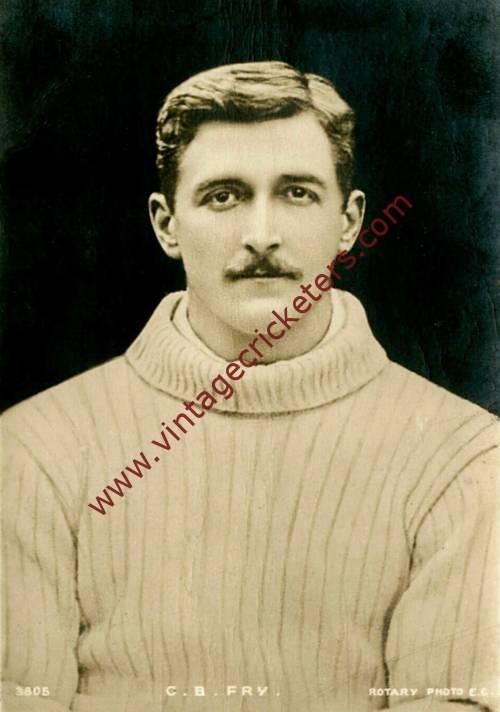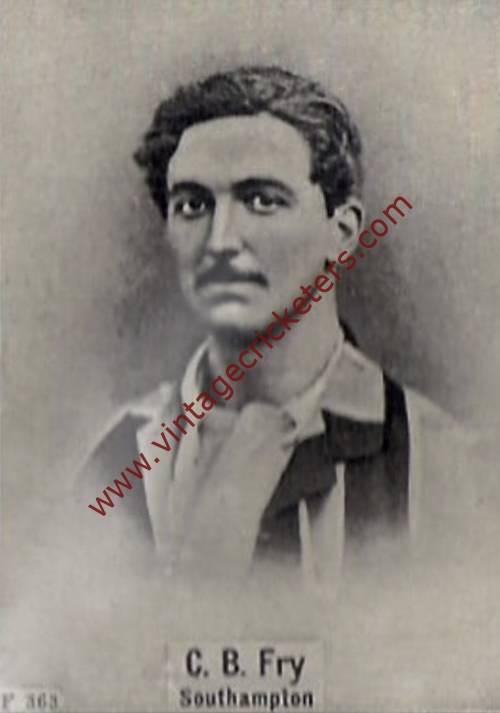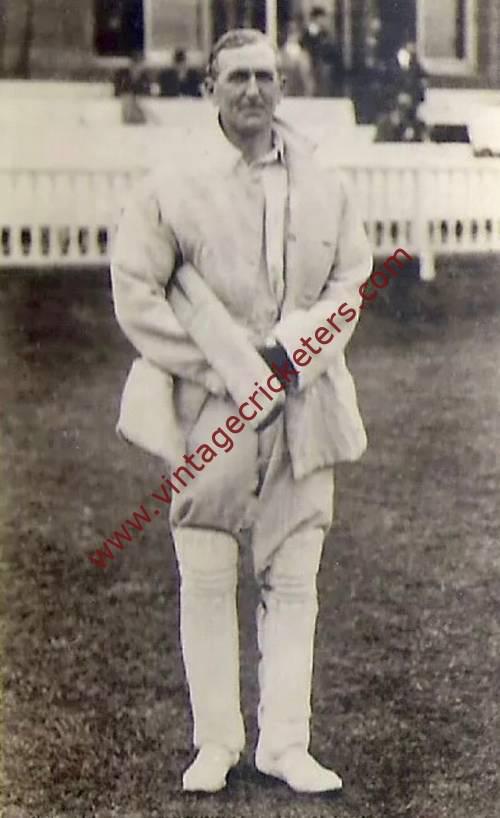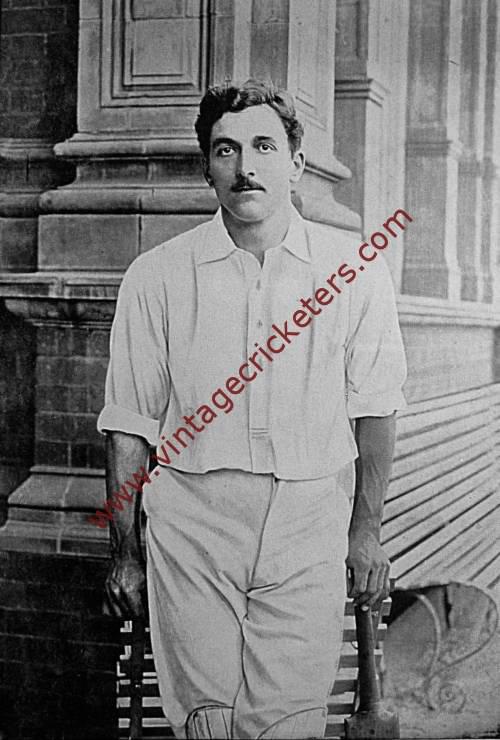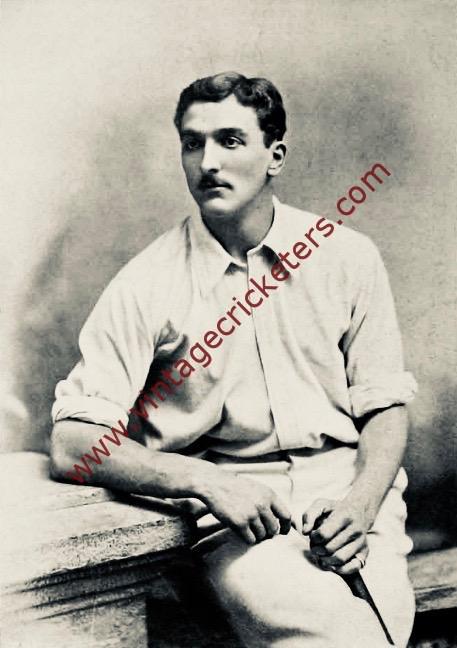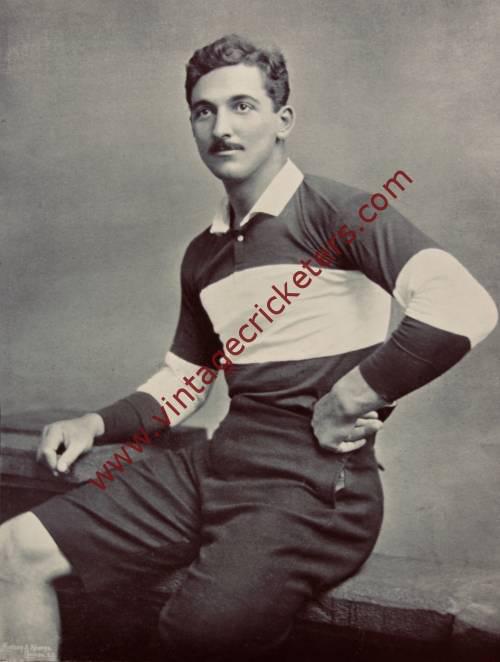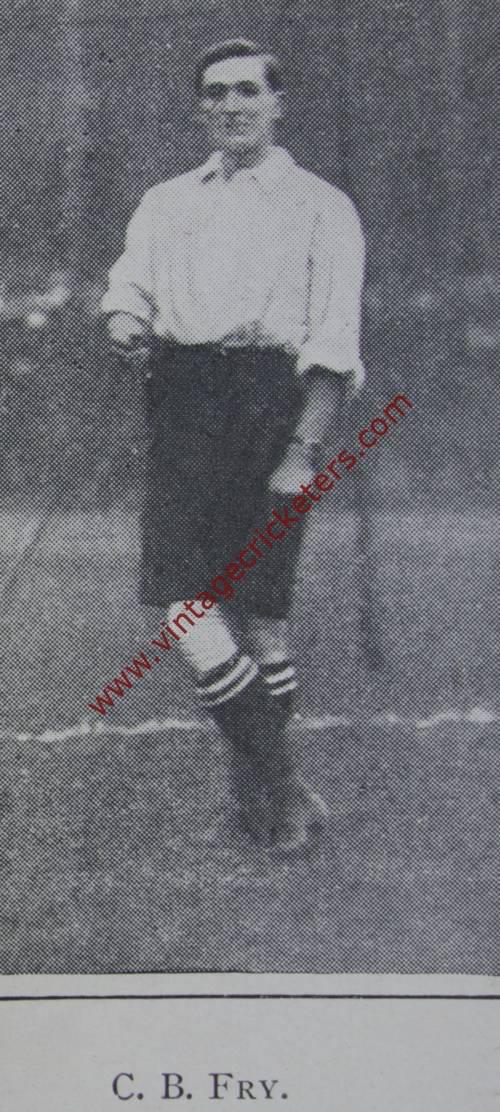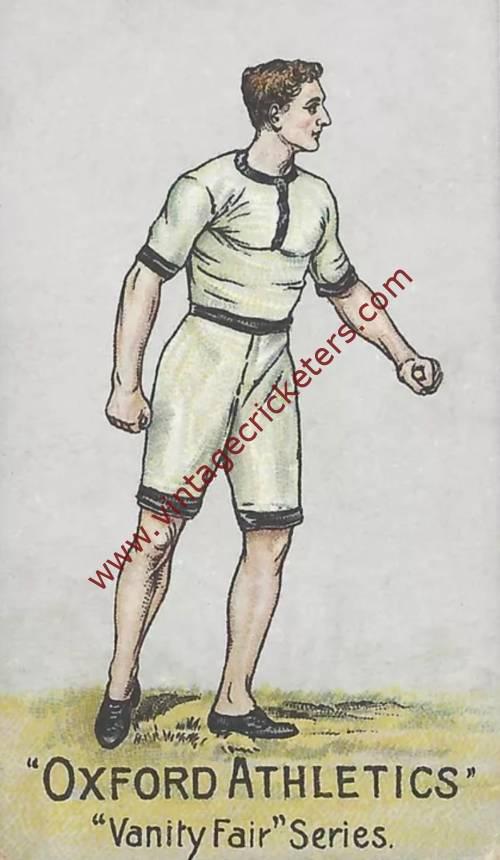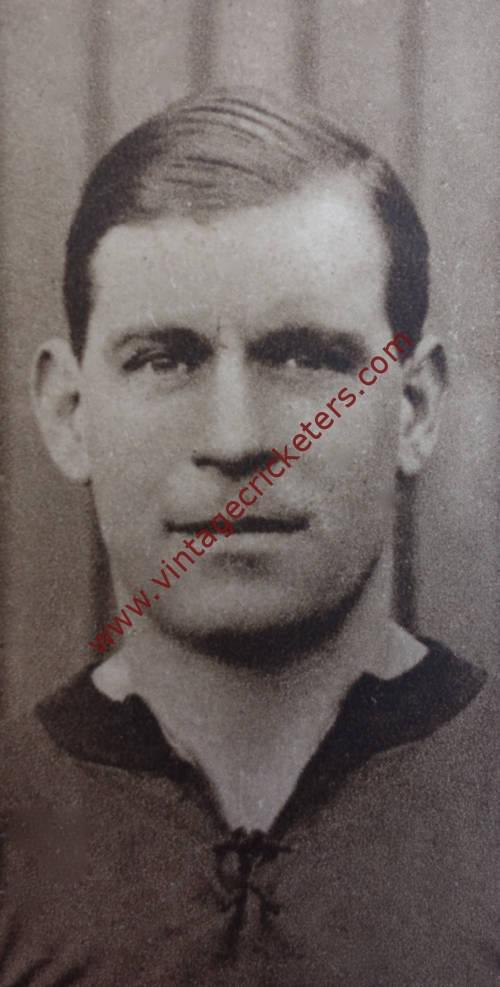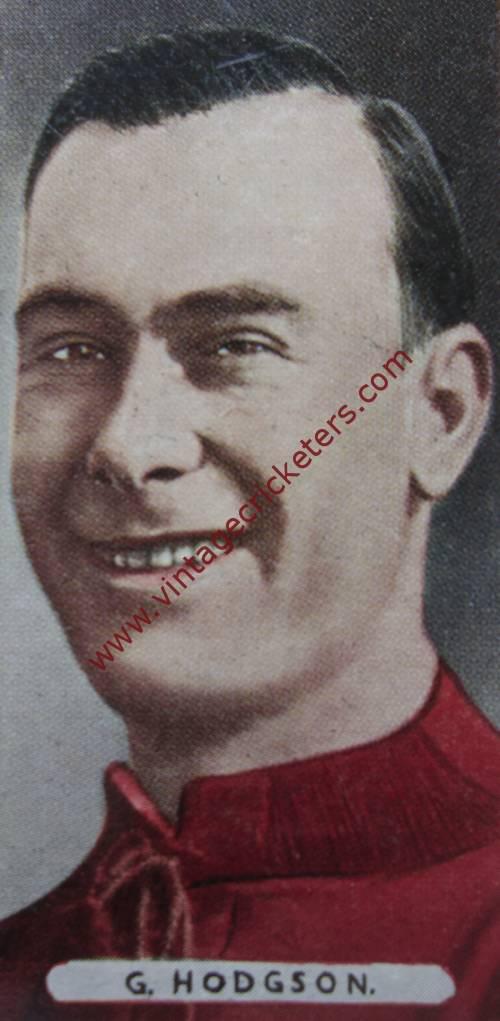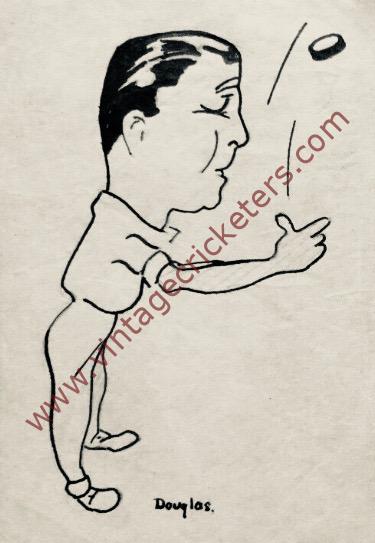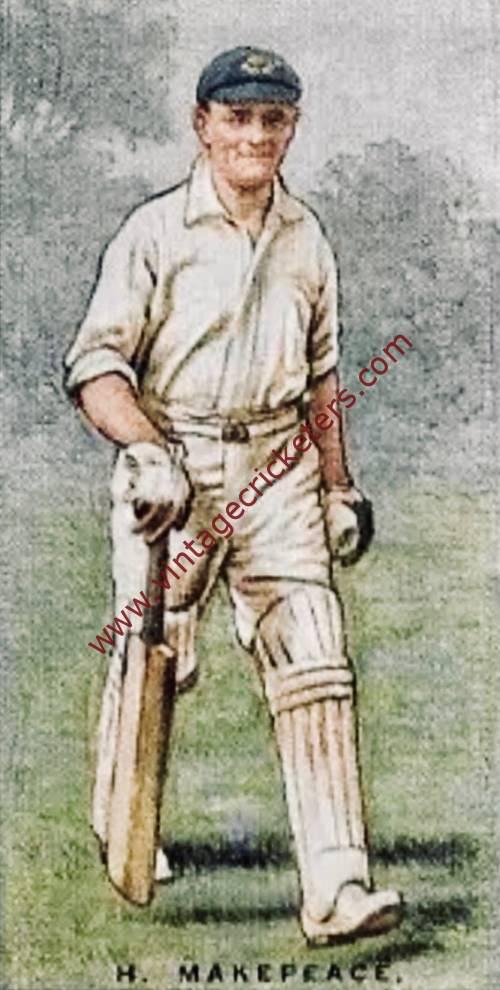Please choose your photo size from the drop down menu below.
If you wish your photo to be framed please select Yes.
Note: 16″x 20″not available in a frame.
Images can also be added to accessories. To order please follow these links
£8.95 – £49.95
Please choose your photo size from the drop down menu below.
If you wish your photo to be framed please select Yes.
Note: 16″x 20″not available in a frame.
Images can also be added to accessories. To order please follow these links
The maximum number of views of this element is reached.
Please contact the webmaster to enable unlimited views.
Croydon, Surrey born Charles Burgess “CB” Fry was truly a sporting superstar and multi talented indeed, undoubtedly one of the finest all-round athletes of his generation. He is one of 12 English double internationals at football and cricket.
His cricket career was truly spectacular, playing for Oxford University from 1892 to 1895, winning Blues in all four years and captaining the University in 1894, meaning that he was simultaneously not only captain of both the University cricket and football teams but president of the Varsity athletics club as well. He played for Sussex between 1894 and 1908 and for Hampshire from 1909 to 1921.
Between 1898 and 1905, Fry was twice first in the English batting averages and four times second. In one year he totalled over 3,000 runs, whilst in five others scored over 2,000. He headed the batting averages (qualification minimum 20 innings) for six English seasons (in 1901, 1903, 1905, 1907, 1911 and 1912).
In his early career Fry was an enthusiastic and successful right-arm fast-medium bowler. He returned his career best figures of 6-78 in the 1895 Varsity match, and he twice took ten wickets in a match: 5-75 and 5-102 for the Gentlemen of England against I Zingari in 1895, and 5-81 and 5-66 for Sussex against Nottinghamshire in 1896 (a match in which he also scored 89 and 65).
Fry scored 94 first class centuries, including an unprecedented six consecutive centuries in 1901. No-one else has scored more consecutive hundreds. On 12th September 1901, playing for the Rest of England against Yorkshire at Lord’s, he scored 105, which was his sixth consecutive first-class century. He made his highest first class score of 258 not out in 1911, a season which led to his recall to the England Test team as captain in 1912.
First selected by England for the tour of South Africa in 1895-96 as a member of Lord Hawke’s England touring party, he played 26 Test matches and captained England in his final six Test matches in 1912, winning four and drawing two. He twice scored Test centuries: 144 v Australia in 1905 hitting 23 fours in just over 3½ hours, batting at number four, and 129 when opening the batting against South Africa in 1907.
In 1921 Fry was once again considered for the Test side. The Selection Committee asked him to play in the First Test match at Nottingham under the captaincy of Johnny Douglas, with a view to taking over the captaincy for the remainder of the series if, as they anticipated, things went wrong. Fry declined on the basis that there was no sense in recalling a 49 year-old merely as a player, but stated that he would consider returning as captain. As England were badly beaten at Nottingham the Selection Committee again pressed Fry to return for the Second Test but once again he declined, due to poor form. Following another heavy defeat in the Second Test the Selection Committee made a further attempt to persuade Fry to return for the Third Test as captain, a job he was now keen to accept.
However he injured a finger taking a catch during Hampshire’s match with the Australians. In the short term, the injury did not appear too serious: he scored a half-century in Hampshire’s first innings and, when they followed on in reply to the Australians’ massive total he top scored with 37. Furthermore, in his next match against Nottinghamshire he scored 61 in the first innings (but registered a duck in the second). It appears however that the injury was affecting his fielding more than his batting and, for last time, C.B. felt obliged to stand down from the side for the next Test and he retired from playing in 1922.
For both Sussex and England, he was closely associated with the outstanding cricketer KS Ranjitsinhji, the future Jam Sahib of Nawanagar. Their contrasting batting styles complemented one another (Fry being an orthodox, technically correct batsman, and Ranji being noted for his innovation, particularly his use of the leg glance). Their friendship lasted well into the 1920’s, and when Ranjitsinhji became one of India’s three representatives at the League of Nations, he took Fry with him as his assistant.
Fry was also an England international footballer. A full back at football he played for England in March 1901 at Southampton, when England beat Ireland 3-0, and represented Southampton in the 1902 FA Cup Final ending on the losing side. In total he appeared 16 times for Southampton between 1900 and 1902. He also played twice for Southern League club Portsmouth in 1902-03 but is perhaps more famous as a player for The Corinthians for whom he played between 1891 and 1903, scoring 4 goals in 74 appearances. He had earned his football Blue at Oxford University between 1892 and 1895.
He was also an incredible athlete who held the world long jump record in 1893 (which stood for 21 years) and was a fast sprinter. He played rugby for Oxford University, Blackheath, The Barbarians and Surrey. The other elements of CB Fry’s story, his enigma, are legendary and I would recommend anyone to read up on him.
His son Stephen Fry played 29 matches for Hampshire between 1922 and 1931, and Stephen’s son, also Charles Fry, played 50 matches for Hampshire, Northamptonshire and Oxford University between 1959 and 1968.
| Weight | N/A |
|---|
